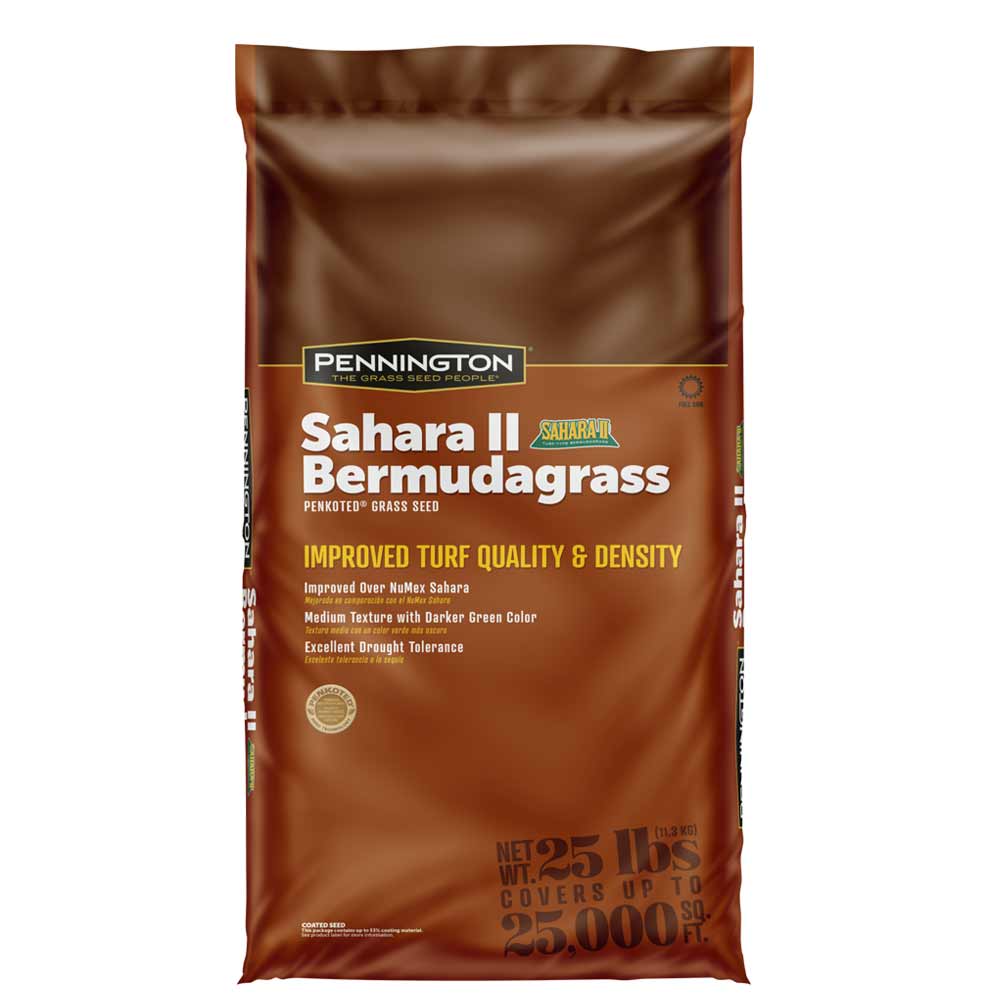
Sahara II Bermudagrass
Sahara II multi-purpose seeded bermudagrass was developed for quick establishment and coverage along with good heat and drought tolerance and consistent high forage yield. It develops into a thick sod with excellent durability and wear characteristics making it well suited for multiple use including for pastures, hayfields, landscape, recreational areas and vegetative erosion control.
Sizes:
RATE: FOR FORAGE PRODUCTION: 15 lbs/A drilled or broadcast for new stands or 8-12 lbs/A to thicken existing stands.
FOR MAINTAINED AREAS: 40-80 lbs/A (1-2 lbs/1000 sq. ft.)
DEPTH: 1/8 inch
DATE: Late spring when soil temperatures reach 65° F or above at a 4” depth thru early summer. Fall plantings may be successful in certain regions of the U.S. (Consult with the local University Extension Office for recommended planting dates for the specific area.)
FERTILIZATION: Apply 25-35 lbs/acre nitrogen as a starter fertilizer at planting. Lime soil to a pH of 6.0 – 6.5 and follow soil test recommendations for P & K.
METHOD: Plant when soil moisture is adequate. For summer plantings, do not plant when ambient temperatures are expected to be above the middle 90’s. If weeds become problematic, periodically mow to reduce competition with the seedling bermuda. To further reduce weed competition, delay the application of fertilizers containing nitrogen until the bermuda seedlings have fully emerged.
BROADCAST: CLEAN-TILLED GROUND
• Prepare the ground well in advance. This allows the first flush of crabgrass and other weed competition to germinate and be killed by an application of a non-residual and non-selective herbicide like glyphosate before planting Sahara II. • Clean-till the area with a disk, then level and smooth the area. Use a culti-packer to prepare a firm seedbed before planting. Several passes may be necessary to achieve proper firmness. • Broadcast the seed and cultipack once more to get good seed to soil contact. Bermudagrass seed will not germinate in a fluffy, loose seedbed.FOR NO-TILL DRILL
• Take added precaution to ensure seed are not dropping too deep; 1/8" or less is ideal. One method to prevent deep planting is to pull the drill’s drop tubes out of the openers and let the seed fall behind the opener to be pressed into the loosened soil by the press wheel. • Ensure that existing residue is not too thick for seedlings to emerge and that the seed is making good soil contact beneath the residue.TO THICKEN EXISTING STANDS
If seed are to be broadcast, loosen the soil surface in the bare areas prior to seeding by scratching with a finger drag or by light disking. After seed are broadcasted, use a culti-packer or similar roller device to press the seed into the soil and to firm the ground. If using a no-till drill, see instructions for No-Till Drill.
